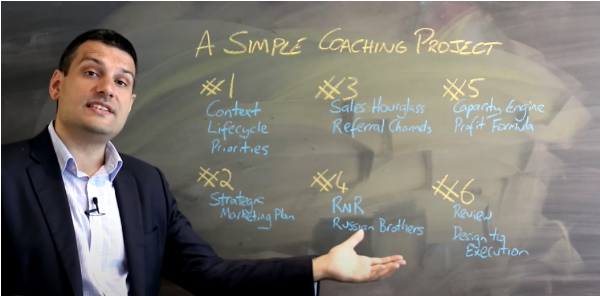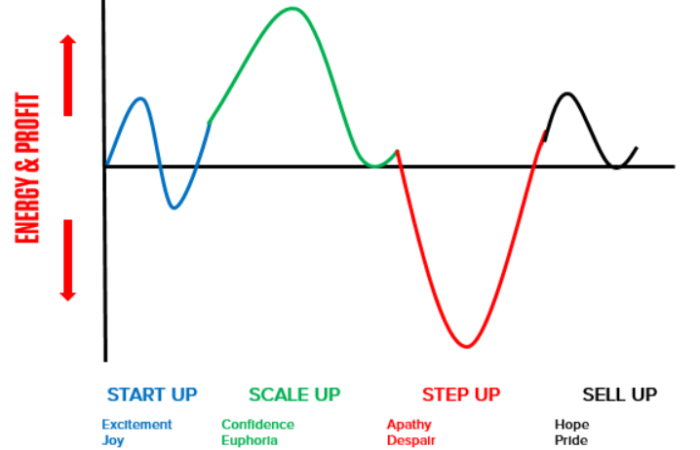Speedbumps, Hurdles and Brick Walls. In Blackboard Fridays Episode 2, Jacob talks about Business Lifecycle. Need this implemented into your business? Talk to the international business advisor who can do exactly that – Contact Jacob, Learn More, or Subscribe for Updates.
WHO IS JACOB ALDRIDGE, BUSINESS COACH?
“The smart and quirky advisor who gets sh!t done in your business.”
Since April 2006, I’ve been an international business advisor providing bespoke solutions for privately-owned businesses with 12-96 employees.
At this stage you have proven your business model, but you’re struggling to turn aspirations into day-to-day reality. You are still responsible for all 28 areas of your business, but you don’t have the time or budget to hire 28 different experts.
You need 1 person you can trust who can show you how everything in your business is connected, and which areas to prioritise first.
That’s me.
Learn more here. Or Let’s chat.
TRANSCRIPT
Hi, Jacob here. In my last video, I walked through the speedbumps, hurdles, and brick walls the business owners have to overcome along their journey. I now want to go into a little bit more detail in each of these four main phases to help you understand the top three priorities that exist in each so that you can review your business.

Briefly again, the four stages are:
- Start Up, where you need to create your business model. If you don’t get that business model moving and the momentum, and then when you hit this speed bump, you won’t have enough power to move through it. Your business won’t survive the first phase.
- Scale Up. This is where your business model has proved some success and you now have an opportunity to replicate and duplicate in order to create the growth you want. Maybe that’s one other staff member, maybe that’s world domination. All of it builds on replicating the business model.
- Step Up, which is when the business and the business leaders need to face the challenges that have emerged over time. You need to revise your business model. You need to change the way you’ve done things because they’re clearly, whether in terms of your customers or your staff or your profit margins, not working the way that they used to.
- Succeed Up (Sell Up in this original video, though you actually have a choice). You may choose to sell the business, succeed yourself out, either internally through family or through a sale; or you may decide then you want to commit double down go again and experience this journey over again at the next level.
I hope from that brief synopsis you’ve got an understanding roughly where in this journey your business is because here are the key questions you need.
Business Start Up Priorities
In the Start Up Phase, there are three priorities. One, do you have a Product-Market Fit? In other words, does the product service that you’re building match the market that you’re trying to sell it in to?
Often, it takes several iterations of taking a product to market and then getting the feedback and revising it before you can really move on. Businesses that are built out of an idea that never go and talk to the market are bound to fail because they’re not selling what the that wants to buy to.
Two, do you have a Business Model? I like to think of a business model like a machine. I put a dollar in the top, I pull the lever and two dollars drops at the bottom (or $1.10, or even $1.05). In the early stages, you might put a dollar in the machine, pull the lever, and have fifty cents pop out. That will keep you going but it’s not sustainable. You need that Business Model to continue to grow and be profitable.
To do that you need the third factor which is Sustainable Sales. Every business, whether you’re online or face-to-face, is a sales business. If you don’t have the ability to sell, then you will struggle to move through this phase.
Business Scale Up Priorities
Those that make it through into Scale Up have got that basic business model and initial revenue success. Focus can shift to the next three priorities.
What they need to understand now is one, do you have a clear Profit Formula? As my friend John Knight likes to say, “Revenue is vanity, profit is sanity, cash is reality.” At this point here, you need to make sure that the profit and cash is showing up in the business, not just that top line revenue.
Do you have a Growth Plan? The best businesses in the world can scale up very quickly, but if you don’t have a structure and a plan to support that then you will implode, either on the way up or after you take that initial dip. You don’t want your business to be one of the ones that fails because it’s too successful.
The third key priority for a business in Scale Up is Team Culture. In the early stages, a culture is very easy to build because you’re likely involved in all of the recruitment decisions. Now, you’ve probably got a team around you that are involved and like ripples in a pond, you’re now removed one, two, or even more steps away from those recruitment decisions.
You may find that the people you recruited because they felt right are not necessarily recruiting other people that you feel right. You need to consciously design your team culture, and the best time to do that is while you’re growing and while you have the energy to define a great culture instead of while you’re struggling and identifying culture as a problem.
Business Step Up Priorities
Businesses that make it through to the Step Up Phase are a minority, and to be honest, you have to be really successful to make it that far. It just doesn’t feel like it. Here are the three priorities for a business in that phase.
One, you need to Redesign Your Business whether that’s a specific business by design retreat, which I do with some clients, or whether it’s a long term process where you slowly eat the elephant one bite at a time, you need to review all of the decisions and identify which ones need a different approach moving forward.
You need Rest ‘N’ Recuperation. Now that doesn’t mean you get to go and take a big holiday and all of this will get fixed. It means you need to look at who’s doing what within the business. We often find that the most valuable resources are doing some of the least valuable tasks in the business. Reviewing your “roles and responsibilities” will give you “rest and recuperation”, which gives you the energy to drive the business forward.
The third thing you need here is a Product Market Refresh. It’s often between 10 and 20 years from Start Up to a business that really gets stuck in that Step Up brick wall. Your market has changed and the technology systems to support your product have changed. So if you’re trying to sell the same product to the same people in the way you did 20 years ago, you are going to continue to struggle.
What we find in a lot of cases is that previous products become a smaller part of the business because you find new opportunities. At this stage, you understand your clients a lot better than businesses and Start Up do—that’s your advantage.
Business Succeed Up Priorities
Lastly, those that are making a choice when it comes to Sell Up or Leverage. You’ve got three key priorities. The first is Making that Choice. Are you looking at legacy in terms of what you leave behind when you exit the business or are you looking for leverage? Are you looking to say “we’ve managed to create this business successfully in one market, how do we now leverage that into other cities or other countries or perhaps even other industries?”
Priority two is understanding What’s Your Number. What’s the number that you would need to live the rest of your life in freedom. Can you sell this business for that number or do you need other assets? Have you got a strategy to grow the valuation of the business?
The third priority is Succession Readiness, whether that’s investors, internal, or family succession. Have you structured the business in such a way that if you were to sell it, you were to retire, or god forbid you were to get hit by a bus, the business would be able to live on without you? Once you’ve built a business that can survive without you, energetically you have freedom and the business is released to go and create more wonderful things.
In Summary
What I encourage all of my clients, whether they come to a workshop or work with me one on one is:
- First and foremost, understand where you are in the Business Lifecycle.
- Identify what your Vision is – where in the Lifecycle do you want to move to (or do you want to stay where you are for as long as possible)?
- Take a hard look at the three priorities you have right now, with an honest review as to whether those things are working or not.
There’s a lot more to business than just those top priorities, but if you start your focus on those then you will find that your business survives where a majority of businesses do not. I wish you the best of luck.
NEXT STEPS
Want to learn more about how this can apply to your business? It costs nothing to chat:
- Email me jacob@jacobaldridge.com (I read them all)
- Call, Text, or WhatsApp me +61 427 151 181
- Or just Subscribe https://jacobaldridge.com/about/subscribe-to-jacob-aldridge-com/ to stay in touch





[…] Episode 2, Speedbumps, Hurdles and Brick Walls – https://jacobaldridge.com/business/speedbumps-hurdles-and-brick-walls/ […]
[…] the lifecycle sits atop ‘The businessDEPOT Way’ and was the topic of #BlackboardFridays Episode 2 way back in […]
[…] I lived and worked coaching businesses in the UK during the Global Financial Crisis, so I speak from experience – and most of that experience is about the importance of looking ahead in the economic cycle, just like your business lifecycle. […]
[…] want more details on exactly where your business is on its Lifecycle, enjoy watching Episodes 1 and 2 here. And if you want to learn more about the emotional rollercoaster and strategic priorities at […]